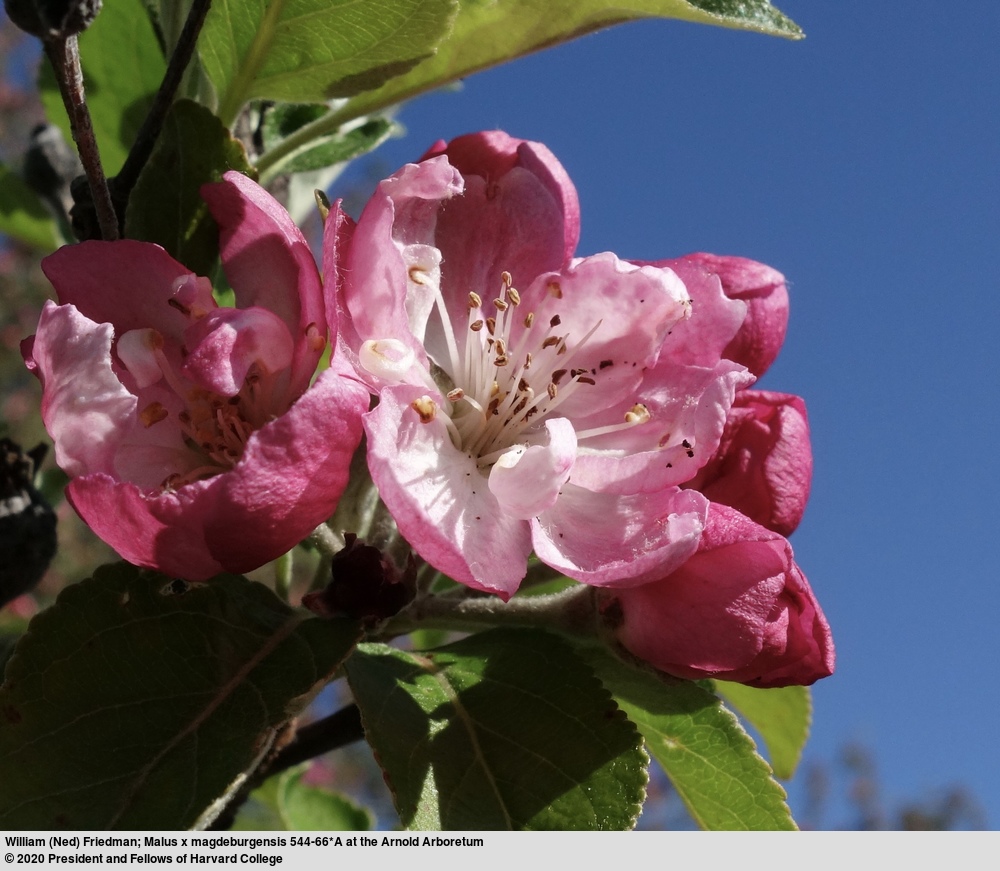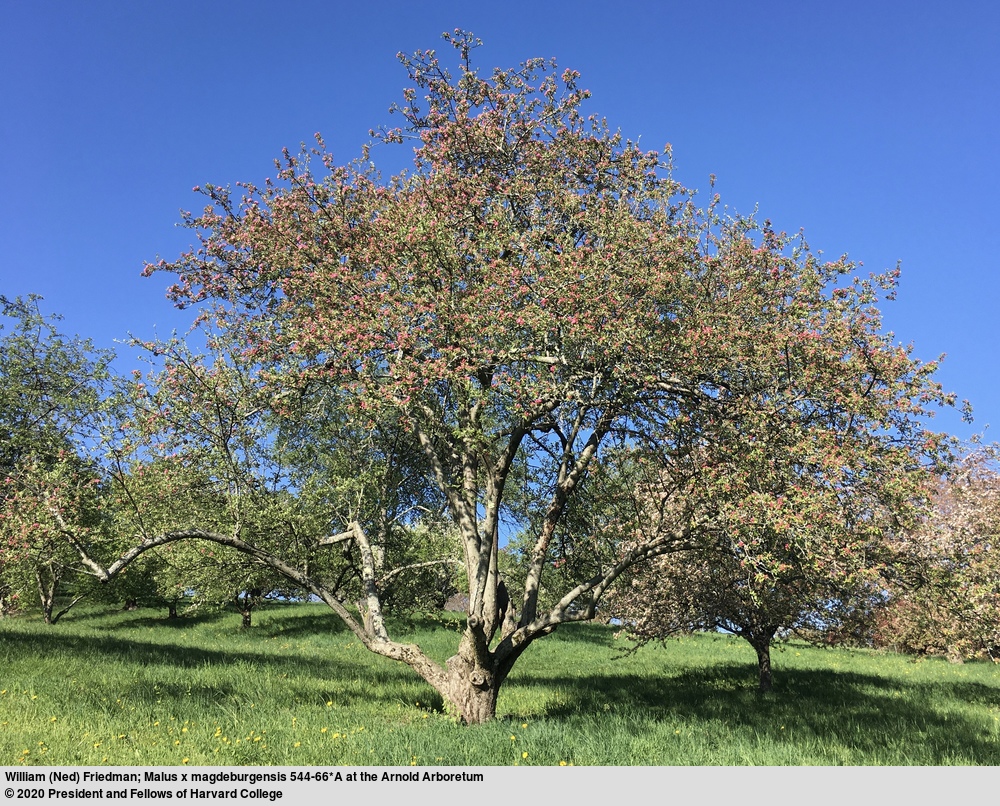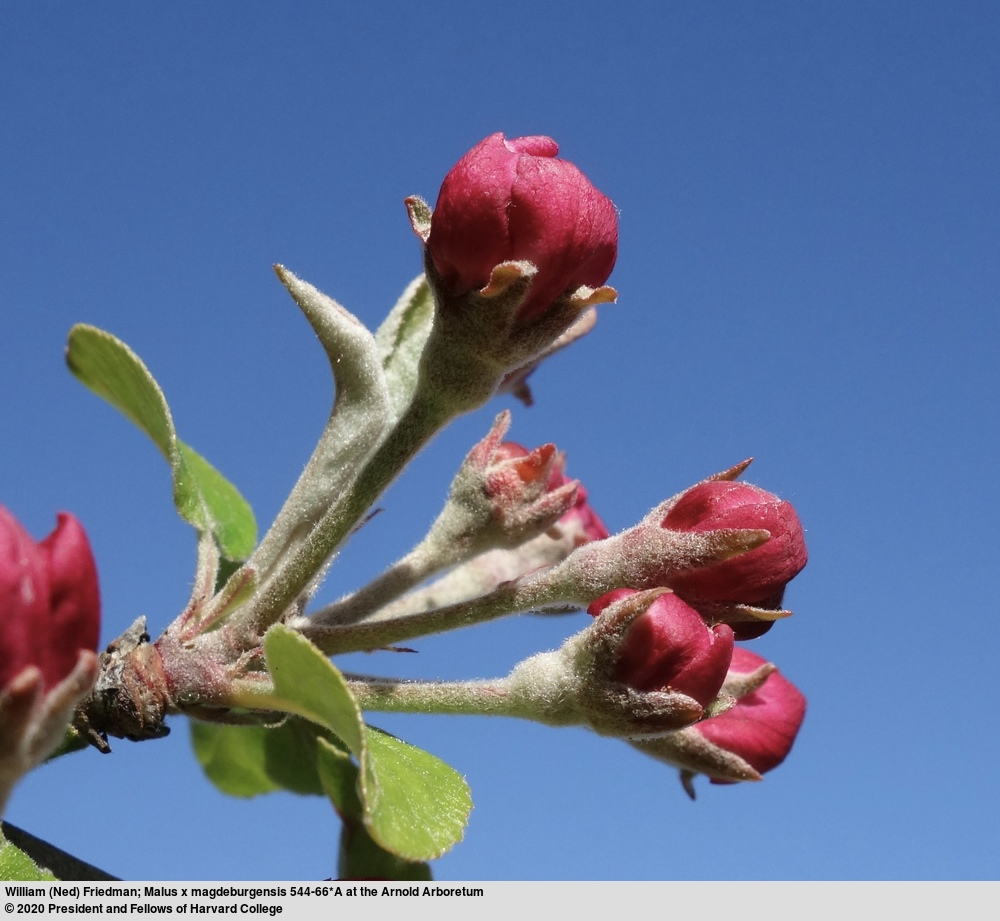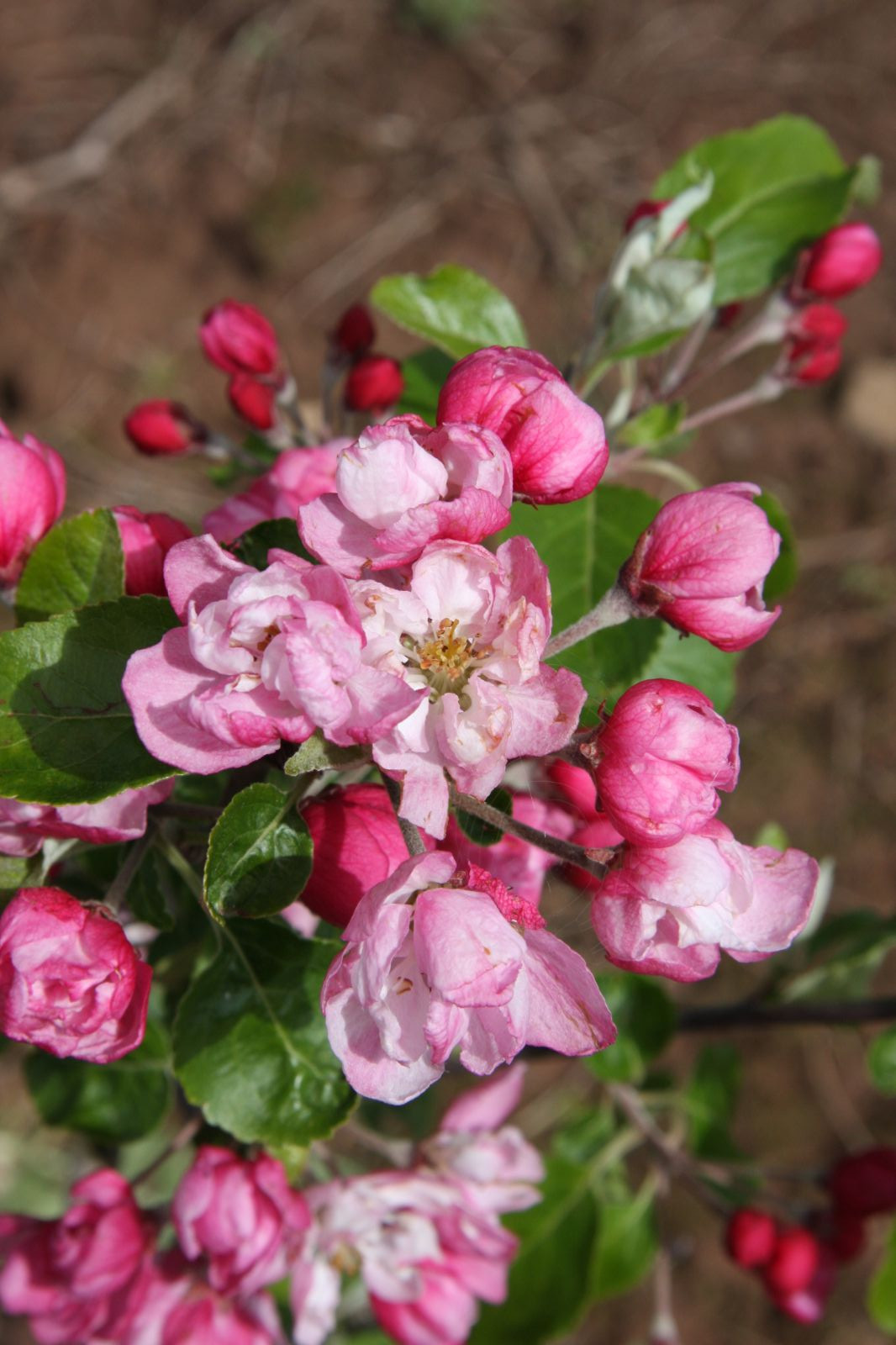Malus × magdeburgensis
Sponsor
Kindly sponsored by
Francine: 'after many informative Tours and Study Days with the IDS I feel it only fitting to help and promote such a wonderful organisation'
Credits
Julian Sutton (species), Nick Dunn (cultivars) (2021)
Recommended citation
Sutton, J. & Dunn, N. (2021), 'Malus × magdeburgensis' from the website Trees and Shrubs Online (treesandshrubsonline.
Genus
Other taxa in genus
- Malus × adstringens
- Malus angustifolia
- Malus × arnoldiana
- Malus asiatica
- Malus × astracanica
- Malus × atrosanguinea
- Malus baccata
- Malus bhutanica
- Malus × brevipes
- Malus chitralensis
- Malus coronaria
- Malus crescimannoi
- Malus Cultivars A-B
- Malus Cultivars C
- Malus Cultivars D-F
- Malus Cultivars G-I
- Malus Cultivars J-K
- Malus Cultivars L-M
- Malus Cultivars N-Q
- Malus Cultivars R
- Malus Cultivars S
- Malus Cultivars T-Z
- Malus dasyphylla
- Malus × dawsoniana
- Malus domestica
- Malus doumeri
- Malus florentina
- Malus × floribunda
- Malus fusca
- Malus × gloriosa
- Malus halliana
- Malus × hartwigii
- Malus × heterophylla
- Malus honanensis
- Malus hupehensis
- Malus ioensis
- Malus kansuensis
- Malus kirghisorum
- Malus komarovii
- Malus × micromalus
- Malus × moerlandsii
- Malus montana
- Malus ombrophila
- Malus orientalis
- Malus × platycarpa
- Malus praecox
- Malus prattii
- Malus prunifolia
- Malus × purpurea
- Malus × robusta
- Malus rockii
- Malus Rootstock Cultivars
- Malus Rosybloom Cultivars
- Malus × scheideckeri
- Malus sieversii
- Malus sikkimensis
- Malus × soulardii
- Malus spectabilis
- Malus spontanea
- Malus × sublobata
- Malus sylvestris
- Malus toringo
- Malus transitoria
- Malus trilobata
- Malus tschonoskii
- Malus turkmenorum
- Malus yunnanensis
- Malus × zumi
A hybrid between M. domestica and M. spectabilis, much like M. domestica in tree form and flower. Red-purple buds open to semi-double, occasionally single pink flowers, 4 cm diameter, with (5–)10–15 petals. Fruit resembling a small M. domestica, about 3 cm diameter, ribbed, yellow, sometimes blushed red. (Fiala 1994; Jacobson 1996).
A very showy tree in bloom, covered with intensely coloured flowers. It has good disease resistance. Named in 1893, it originated in Germany, perhaps as early as 1850 (Jacobson 1996) and is still in the European nursery trade. This is effectively a cultivar named as a nothospecies, as was common practice at the time.
Good examples in Britain include a tree in Roath Park, Cardiff, measured at 9 m × 126 cm in 2015 (Cardiff Parks 2020). It is recorded in Belgium at the Arboretum Kalmthout, as a tree dating from 1959 (Plantcol 2020), and in the Netherlands at the Belmonte Arboretum, Wageningen (Belmonte Arboretum 2020).
It has been grown in North America at least since 1908 when a tree was acquired by the Arnold Arboretum from the Späth nursery, Berlin (Arnold Arboretum 2020), but has always been very rare (Jacobson 1996). There are still trees propagated from the original introduction at the Arnold, including one (pictured here) dating from 1966 (57 cm basal diameter, 2015 – Arnold Arboretum 2020). It is also recorded in Washington Park, Seattle (University of Washington Botanic Gardens 2020).




